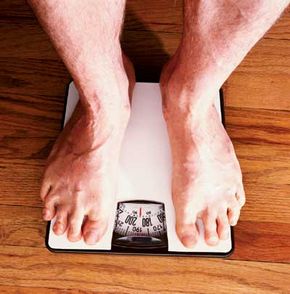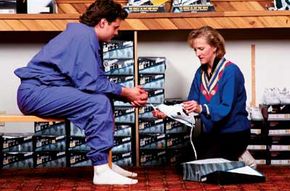We bend them, kneel on them, run and jump on them daily, yet few of us give them a second thought. Knees. They're one of the most complex -- and most injury-prone -- joints in your body. Why? Blame the knee's design. Unlike the more stable hip joint, which is a ball in a deeply-cushioned pocket, the knee joint is more exposed -- and more vulnerable.
Essentially, the knee is made up of the thighbone (femur), which has a bottom end made up of two rounded knobs (condyles), sitting on the relatively flat top end of the shinbone (tibia). The kneecap is a small, rounded bone that sits in the vertical groove between the two condyles and gives the joint strength.
Advertisement
As the knee bends and straightens, the kneecap slides up and down in the groove. A tendon attaches the kneecap to the thigh muscles above, and a ligament connects it to the shinbone below. The kneecap acts like a
pulley, increasing the power of the muscles
attached to it.
Think about the kneecap as a puppet controlled by "strings" -- muscles, tendons, and ligaments. As long as all of the strings pull in just the right way, the kneecap moves back and forth smoothly in its track. But if any string pulls too strongly or not hard enough, the kneecap is pulled out of its track and can no longer glide easily against the thighbone, which can cause pain and may even damage the kneecap.
Because women have wider hips, the upper-leg bone of a woman enters the knee at a greater angle, which twists the knee. This makes women more vulnerable to certain types of kneecap injuries, such as chondromalacia (in which the smooth layer of cartilage that coats the end of the thighbone becomes roughened or cracked), as well as problems with the anterior cruciate ligament (ACL).
If the large muscles in the thigh (quadriceps) are inflexible due to disuse or lack of stretching before exercise or if these muscles are overused, they can cause inflammation of the knee tendons (patellar tendinitis), or "jumper's knee." Muscle imbalances, in which one group of muscles is stronger than another and pulls harder, can cause knee problems, too.
While knee problems can result from injuries such as falls, automobile accidents, and athletic injuries or diseases like arthritis, the vast majority of knee problems are caused from overstressing the knee during running, climbing, or other repetitive, high-impact exercise. Poorly conditioned leg muscles also stress the knees.
However, if your knee problems are the result of overuse, lack of use (or "weekend warrior syndrome"), or improper training rather than injury, you can use the strategies and home remedies in the next section to improve and maintain the health of your knees and, if you do develop pain, to help ease the hurt and speed healing.
For more information about knee pain and how to combat it, try the following links:
- To see all of our home remedies and the conditions they treat, go to our main Home Remedies page.
- The neck is another delicate part of the body. Learn about Home Remedies for Neck Pain here.
- Like knee pain, physical activity can also cause shin splints. Read about Home Remedies for Shin Splints.
- If walking or running gives you pain, check out Home Remedies for Foot Pain.
- Those with muscle aches should familiarize themselves with Home Remedies for Muscular Pain.
This information is solely for informational purposes. IT IS NOT INTENDED TO PROVIDE MEDICAL ADVICE. Neither the Editors of Consumer Guide (R), Publications International, Ltd., the author nor publisher take responsibility for any possible consequences from any treatment, procedure, exercise, dietary modification, action or application of medication which results from reading or following the information contained in this information. The publication of this information does not constitute the practice of medicine, and this information does not replace the advice of your physician or other health care provider. Before undertaking any course of treatment, the reader must seek the advice of their physician or other health care provider.
Advertisement

